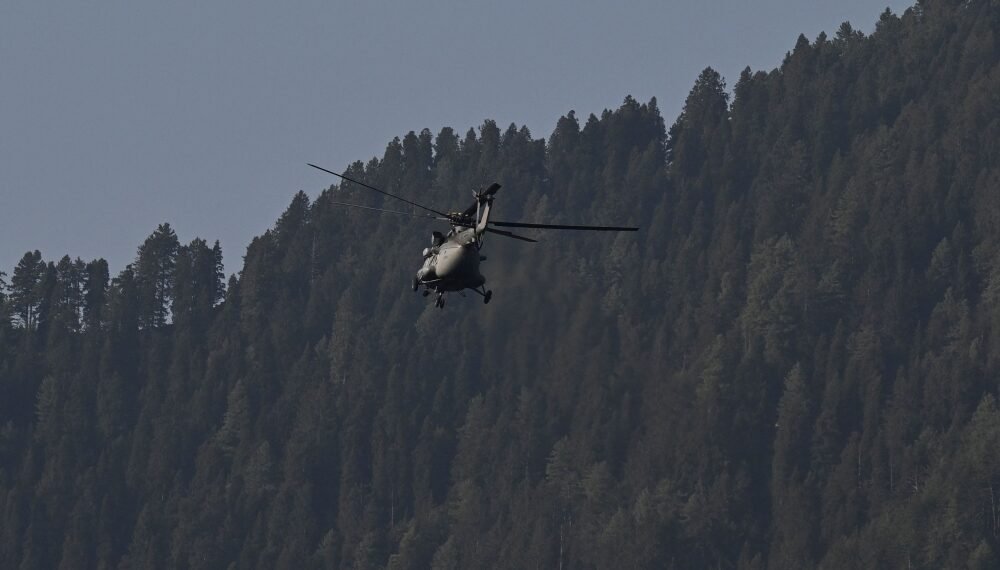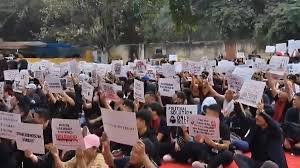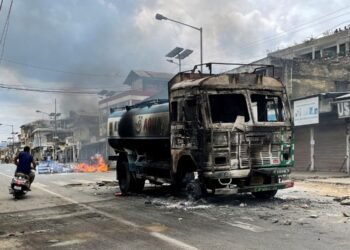Operation Sindoor strikes back—India demolishes nine terror camps, killing over 100 militants. Yet, the killers of 25 Indians and one Nepali citizen in Baisaran valley remain elusive amid difficult terrain and intelligence gaps.
By Parvin Kumar
One of the biggest manhunts launched in South Kashmir since April 22 to track down the perpetrators of the Pahalgam massacre—in which 25 Indians and one Nepali citizen were brutally gunned down in the Baisaran Valley—is still ongoing.
Anti-terror operations began across the districts of Anantnag, Shopian, and Kulgam immediately after the tourists were shot dead in front of their loved ones while they were enjoying the scenic beauty of the Pahalgam resort.
Special teams comprising elite Indian Army commandos, jawans from the Jammu and Kashmir Police’s Special Operations Group, Central Reserve Police Force personnel, and National Investigation Agency teams have been combing the dense forests in search of the terrorists—but so far, without success.
READ: YouTuber Jyoti Malhotra among 6 held for spying for Pakistan
Some Delhi-based publications earlier reported that security forces came close to neutralising the terrorists on two occasions. However, they managed to escape the tight cordons laid to trap and punish them for the heinous killings of innocent holidaymakers.
#BREAKING
Three of the four terrorists who perpetuated the Pahalgam terror attack are still out there.
Posters up today in south Kashmir announcing Rs 20 lakh for info and punishment for their protectors. pic.twitter.com/pGtJZZ4lwU— Megha Sharma (@msharma179) May 13, 2025
Meanwhile, to avenge the massacre, India launched Operation Sindoor—a series of punitive strikes aimed at demolishing terrorist safe havens.
Nine terror camps were targeted and successfully destroyed in these operations. More than 100 terrorists were killed in Pakistan and Pakistan-occupied Jammu & Kashmir (PoJK), including individuals linked to the 1999 Indian Airlines IC-814 hijacking and the 2019 Pulwama terror attack.
However, the perpetrators behind the Baisaran Valley killings took advantage of the delay in the arrival of security forces at the massacre site.
ALSO READ: Horror Myanmar Children Face (2): Hundreds of Innocents Slaughtered
Eyewitness accounts suggest rescue and security teams reached Baisaran Valley 60 to 70 minutes after the shooting.
In the aftermath, a series of high-level review meetings were held in Jammu and Srinagar to formulate strategies for flushing out the Pakistani terrorists believed to be hiding in the forests.
Lack of Human Intelligence
Due to the absence of accurate human intelligence, a group of battle-hardened Pakistani terrorists and their local accomplice have so far evaded detection by security forces.
In response, police detained a large number of local overground workers and service providers in an effort to extract vital leads related to the attack on the visiting tourists.
The massive manhunt in South Kashmir has been underway since April 22.
On Friday, addressing media personnel in South Kashmir’s Pulwama district, Major General Dhananjay Joshi, GOC of Victor Force, said, “Wherever the terrorists hide, we will find them and neutralise them.”
Referring to the recent elimination of six local terrorists in two back-to-back operations, IGP Kashmir VK Birdi said security forces are focusing all attention on South Kashmir to flush out the foreign terrorists hiding there.
Birdi noted that the intensified coordination among various security agencies led to two successful operations in the past three days, resulting in the deaths of six terrorists—describing the outcomes as “significant achievements.”
Terrorists Behind Earlier Ambushes Still at Large
Prior to the Pahalgam massacre, at least 60 security personnel and over 30 civilians had been killed in various ambushes and targeted strikes by Pakistan-based terrorists across Jammu and Kashmir since October 2021.
The twin border districts of Rajouri and Poonch were the worst affected, witnessing repeated ambushes on Army vehicles and patrols since 2021.
A stark example of the tactical shift in Pakistani strategy came on October 11, 2021, when a heavily armed terrorist group ambushed an Army patrol in the Charmer forest area of Surankote tehsil, Poonch, killing five soldiers, including a Junior Commissioned Officer (JCO).
Four more Indian soldiers lost their lives in the following days while pursuing the same group of terrorists near the Bhatta Durian area of Mendhar tehsil, Poonch.
On New Year’s Day 2023, seven civilians were killed in cold blood in Rajouri’s Dhangri area, triggering massive protests from local residents. They blamed the lack of security presence in the surrounding hills for allowing infiltrators to move freely after a long gap. Troops previously stationed in the region had been redeployed to eastern Ladakh following the Galwan Valley clashes.
One of the most provocative attacks on Army personnel occurred on April 20, 2023, when five Rashtriya Rifles (RR) jawans were charred to death after their vehicle was ambushed between Bhimber Gali and Poonch, at Bhatta Durian in Mendhar tehsil.
The footprint of Pakistan-based terrorists has since expanded toward the districts of Reasi, Udhampur, Doda, Kishtwar, and Kathua—without facing significant resistance.
Last year, while Prime Minister Narendra Modi was preparing to take the oath of office for a third term, nine pilgrims were killed near Reasi by heavily armed terrorists on June 9.
On October 20, 2024, a group of seven construction workers—including a doctor from Kashmir Valley—were targeted at their camp near Gagangir, the site of the Z-Morh tunnel project. Civilians were also attacked in Kathua’s Billawar tehsil and in the Basantgarh area of Udhampur and Kishtwar.
On October 24, 2024, two soldiers and two Army porters were killed when terrorists ambushed an Army vehicle near Bota Pathri village, close to the tourist destination of Gulmarg.
Unified Terror Command Structure Suspected
Preliminary security assessments indicate that highly motivated modules of Pakistani terrorists—apparently working under a unified command structure since October 2021—have inflicted heavy casualties with calculated precision.
After each attack, the terrorists managed to escape without encountering strong resistance, exposing vulnerabilities in the region’s multilayered security apparatus.
These terrorists favour hit-and-run tactics, taking advantage of the dense forest terrain and using local guides or overground workers to slip away undetected.
In all these strikes, they were armed with automatic weapons—including US-made M4 rifles—and used armour-piercing steel-core bullets. They even wore body cameras to record the chilling details of their attacks and communicated through encrypted messaging platforms to avoid surveillance.













